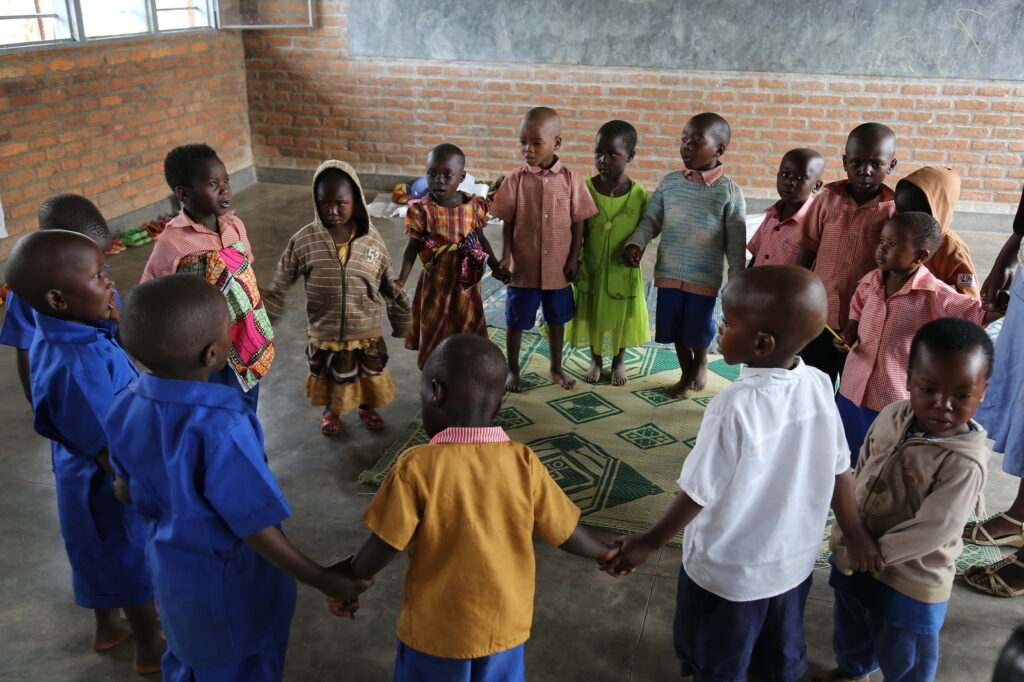Black Models

Building upon Falope’s view of early learning in Nigeria, we think back to core ideas from Black perspectives on child development from Chapter 2, with development as preparation for life in many African models.
East Africa
In East Africa, Kenyan researchers Wadende, Oburu and Morara (2016) highlight this goal as they outline commonalities of approaches to play and learning in African Indigenous communities. The values of good behaviour and learning from adults to acquire essential skills was a framing for early learning; the authors note this is consistent with Rogoff’s apprenticeship model (1990).
Similar to Turtle Island Indigenous models, the authors identify a holistic view of child development that results in a value of providing opportunities to learn through practical tasks that support development across all domains, not just thinking.
They outline an approach used in a bridging organization in Kenyan communities between home and schooling called Early Childhood Development (ECD) centres, in which Indigenous Motivational Care-giving Practices (IMCP) were used.
The use of IMCP through such centres acknowledges both the transition to more academic tasks of school as well as the origins of learning at the local level, creating links between the two. This practice highlights how formal primary education is locally situated and that the holistic view of the child and the goals of contributing to the community are in harmony with academic tasks. In this way, institutions can reflect cultural values and practices, even if they are more formalized and move into new areas of learning.
The Caribbean
Escayg and Kinkead-Clark (2018) also discuss the cultural presence in early learning in their emphasis on the need to decolonize education in the English-speaking Caribbean. The authors point to the need to go beyond the actual curricular content and teaching methodologies to question the core cultural assumptions at play in early childhood education. Local knowledge is replaced by colonial models that give preference to the wealthy and emphasize a racist hierarchy in schooling. My summary here cannot do justice to the complex history of colonial education the authors summarize, so I encourage you to read their original work.
From this important work, I wish to draw parallels with the discussion of early learning and its link to play in Western models. Just as authors from Africa and Asia (in the following section) have highlighted, the modern implementation of play-based learning across the globe represents a spread of Western values through early learning.
Escayg and Kinkead-Clark caution against making assumptions about the play types in Caribbean cultures, their use, and how they may be integrated into learning in unique and locally situated ways. The decolonizing pedagogy the authors propose after reviewing early learning policies in Trinidad and Jamaica reflects values that predate colonial models in the Caribbean: local literacy practices in story and song, using the arts to express empowerment, and cultural practice as resistance, among others. This view is not only raising local practice, but it is also an empowering model for children’s learning and thinking that speaks to identity.
In thinking about expanding our use of pedagogical approaches in Ontario, consider the diversity in Black childhoods and how empowerment through literacy, culture, and art can be integrated into early learning here. This notion is inspired by Escayg and Kinkead-Clark’s (2018) work, but it has relevance far beyond the African Diaspora and most certainly rings true with Indigenous populations in the Caribbean.

